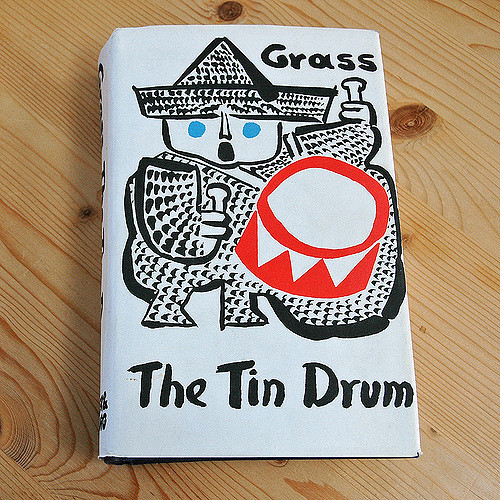Beep-beep-beep, tap-tap, tap-tap—the typing and printing sounds echo in a small office that looks like a paper cave. A man in a medical-doctor-like white robe devotes himself to his work. He moves to a room equipped with a large industrial printing machine and checks paper came from it. Then he crams a pile of book samples in a suitcase and leaves the office for a trip to New York, Los Angeles, Paris, and Qatar to meet his clients.
The man is Gerhard Steidl, a designer and printer since 1967. The paper cave is his office, called “Steidl.” Steidl is a publisher located in Göttingen, Germany with approximately forty-five employees. Steidl is just a small publisher in a small town; however, the company is recognized as the producer of the most beautiful books in the world and is loved by celebrities such as Nobel Prize winner Günter Grass; photographer Robert Frank; and Chanel’s head designer, Karl Lagerfeld. The documentary film, How to Make a Book With Steidl addresses Steidl’s enthusiasm, philosophy, and attitude toward publishing as well as how the most beautiful books are created.
During the trip, he first flies to New York to meet photographer Joel Sternfeld to discuss Sternfeld’s new title, iDubai. It is a photo book composed of pictures taken at a shopping mall in Dubai within his iPhone, intended to capture ordinary people’s lives rather than aesthetic objects. Steidl zealously consults with Sternfeld about trim size, title, and subtitle. He respects Sternfeld’s ideas but sometimes gives advice. Sternfeld agrees with increasing the number of pictures without argument. Later, Sternfeld carefully checks a galley to make sure it reproduces the color on the iPhone screen. Steidl does not disturb him by saying something silly such as analog quality is better than digital; he just listens to his client and realizes the demand. It does not matter to him whether analog or digital is superior.
Throughout the trip, he meets Ed Ruscha, Khalid Al-Thani, Frank, Lagerfeld, and Grass. He not only discusses business matters with his clients but also builds relationships with them by chatting, sharing meals, and posing for photography and a painting. He says he actually does not love traveling, but face-to-face meeting is the most effective way of communication. Because he emphasizes quality rather than quantity, he cherishes long-lasting relationships with a small number of creators. His inspiration for designing books is generated by interactions with clients. In fact, when he met Al-Thani in Qatar, he found that Arabic people tend to prefer a big Ferrari with fire red paint to a tiny Volkswagen with practical color. So he advises Sternfeld that iDubai should be flashy and commercialistic; he suggests creating the “ugliest” book. Once they decide on the concept, they quickly determine the cover’s layout, texture, font, and color to make the most thoughtfully designed “ugly” book. They choose rough glitter paper and gold letters for the title. On the back cover, they place a big gold barcode to represent commercialism. As a result, iDubai embodies the contemporary Dubai: gorgeous and vulgar.
Many people may wonder how Steidl gains profit, but he is not interested in making money from book publishing or expanding his business. So how does he manage the finances? The company has some big titles and clients such as The Tin Drum by Günter Grass and Chanel’s catalogues. He allots all profits from them to investments and making various books that are not always profitable. Steidl also undertakes the entire production from planning to printing without outsourcing. By doing so, the company saves money and does consistent work without outsiders’ intervention. The self-employment business model also helps Steidel keep stakeholders from interfering. In addition, he realizes that he has unconsciously established a unique marketing model: a guarantee for making beautifully designed, fascinating books. As a result, the company saves advertising costs and is supported by big clients and many collectors all over the world.
Thus, Steidl succeeds in creating the most beautiful books by having good relationships with clients and disregarding costs for the goals. Face-to-face meetings can bring about unexpected discoveries. He also values physical senses such as touch, sight, and even smell. He asks his clients to smell paper and ink because he knows appealing to the five senses draws people’s attention. He says he is addicted to those smells and cannot separate himself from them. The company is convinced that the client-centered business model and good quality work are its marketing strategies. If you are interested in Steidl and want to know in-depth information, I would suggest applying for its internship. Steidl is willing to accept interns from foreign countries, so it would be a good option for Ooligan Press graduates after completing the program.

